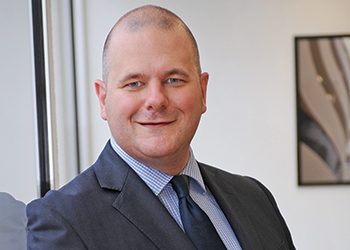 Jackson … tailored approach.
Jackson … tailored approach.
To create truly sustainable buildings, an integrated and informative approach by all parties, right from architect to suppliers, is the only way forward, says ANDREW JACKSON*
As stated by the International Energy Agency (IEA), cities are one of the main drivers of global energy demand and greenhouse gas emissions, accounting for around 70 per cent of both. With buildings in the Arab region accounting for 40 per cent of carbon emissions, the local construction industry is being targeted as part of the governments’ drive toward a zero-carbon future.
To embrace sustainable construction techniques, technologies and business practices, the countries in the region have made various sustainability practices mandatory as parts of the building permit process. Dubai introduced Green Building legislation in 2014; Abu Dhabi has Estidama, a sustainable building framework and a key component of the Abu Dhabi Vision 2030; Saudi Arabia issued a five-year deadline for all companies to comply with new standards on air, water and noise pollution; and Qatar has established the Qatar Green Building Council (QGBC) in 2008, which has since introduced the Global Sustainability Assessment System (GSAS), an international assessment system designed with desert environments in mind and an alternative to Leed (Leadership in Energy and Environmental Design) certification.
The unparalleled construction activity – with projects such as 2020 World Expo in Dubai, 2022 Fifa World Cup and Lusail in Qatar as well as major economic and social developments such as King Abdullah Economic City in Saudi Arabia, and Mini World Park in the UAE – is not only driving infrastructure and real estate developments in the Middle East but also pushing sustainability to the forefront of the region’s building agenda.
Early collaboration
With a plethora of green regulations and the growing complexity of new legislation, expertise and early collaboration between all parties involved in a project is crucial. We are talking about not only clients, architects, designers and contractors, but also manufacturers, suppliers, consultants, and importantly, local authorities.
This would ensure that both international and local regulations and requirements are discussed, understood and implemented by all parties in order to provide the best solution for specific applications. To create truly sustainable buildings, such integrated and informative approach is the only way forward, otherwise a project runs the risk of adhering to only the basic standards and ratings required to gain a building permit rather than aiming to exceed these.
In this process, expertise is necessary to resolve any issues that may arise before or throughout the project, such as technically challenging applications, design and mechanical complexity, as well as integration of third-party products. This is where manufacturers bring added and indispensable value: from the concept and design proposal, performance testing, and manufacturing design, to 3D modelling, building information modelling (BIM) and ‘buildability’ factor considerations.
For construction products to perform the way they are intended to and for the project to deliver on the environmental requirements, the selection and installation process must be carefully considered and understood by all parties.
Each building project, and therefore interior fit-out, is different. Working with specialists means that a tailored approach will be taken whenever possible rather than a ‘best-fit solution’.
Sustainable material
Steel is the world’s most recycled product and can continuously be recycled without any loss of value or properties. On average steel contains a 40 per cent recycled content and additionally these products withhold a residual value at end of life. Less wastage and speed of installation are key benefits for an interior fit-out. Recycled content and long-life-cycle construction products can contribute towards Leed environmental credits or Estidama’s Pearl rating system.
Working with a product manufacturer who has independently verified Environmental Product Declarations (EPDs) is crucial. In this process, components of products have been broken down and assessed. These EPDs are then independently verified by approved verifiers or accredited certification bodies, helping to understand a product’s sustainable qualities, environmental impacts and provide actual data and metrics.
* Andrew Jackson is marketing director of SAS International, a British manufacturer of interior fit-out products, driven by delivering quality, innovation and providing maximum value to clients and specifiers worldwide. With more than 40 years’ experience, the company produces high-performance metal products including ceiling systems and architectural metalwork solutions.








.jpg)




.jpg)




























.jpg)
































